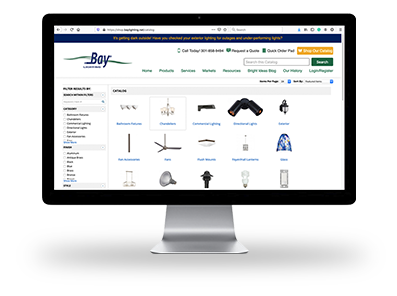Blog
- Home
- Resources
- Bright Ideas Blog
- Lutron Will Stop Selling Fluorescent Ballasts by The End Of 2023
Lutron Will Stop Selling Fluorescent Ballasts by The End Of 2023

Attention all Lutron fluorescent lighting users! Lutron has officially announced that they will be discontinuing their dimming ballasts for fluorescent lights by the end of this year. This decision comes as a response to the industry’s increasing standardization around LED lighting, which offers significant benefits in terms of energy efficiency, maintenance, and financial savings.
The transition to LEDs is not only driven by market demand but also influenced by new laws that are being enacted in various regions. Canada and some US states have already started to ban fluorescent lamps due to their less energy-efficient nature.
Proposed CFL Restrictions in Maryland and Washington, DC
In particular, starting from October 1, 2024, Maryland is set to ban linear fluorescents with a Color Rendering Index (CRI) greater than or equal to 87, subject to the regulations adopted by the Maryland Energy Administration. This means that high-CRI linear fluorescents will no longer be available for purchase in Maryland after that date.
Additionally, Maryland is currently considering a bill in the legislature that could prohibit the sale or distribution of screw-base or bayonet-base compact fluorescent lamps (CFLs) in the state, as well as pin-base CFLs and linear fluorescent lamps, starting from January 1, 2025.
Washington, DC, on the other hand, has already implemented restrictions on high-CRI linear fluorescent lamps, along with additional GSL (General Service Lamp) restrictions.
The following linear fluorescent lamps are no longer for sale as of March 2022 in the region:
- High CRI (>=87) linear fluorescent lamps
- Cold temperature linear fluorescent lamps
- Impact-resistant linear fluorescent lamps
On top of federal law regarding GSLs, the following items are no longer for sale as of March 2022:
- Medium screw base lamps that are: B, BA, CA, F, and G shape lamps >=200 lumens, <=40W
- A and C shaped lamps 200-310 lumens
Signs of Ballast Failure
In light of Lutron’s decision to discontinue their fluorescent dimming ballasts by the end of 2023, it’s important for users to be aware of potential signs of ballast failure. A failing ballast can lead to under-performing or non-functional lights, which can be a significant issue for businesses and homes relying on fluorescent lighting. Here are some common signs that your ballast might be faulty:
- Flickering lights
- Buzzing or humming sounds
- Delayed start
- Inconsistent lighting output
- Overheating ballast
- Burnt or discolored ballast
- Burnt or discolored lamps
Transitioning to LED Lighting: The Future of Illumination
So, what does this mean for you as a Lutron fluorescent ballast user? As the ballasts go bad, finding replacements will become increasingly challenging, ultimately leading to under-performing or non-functional lights. Therefore, it’s crucial to factor this change into your budget and start planning for the future.
Here are your options to navigate this transition:
- Limited Time Supply: Ballasts are currently available in limited quantities, so consider contacting your lighting supplier to purchase some extras while they’re still in stock.
- Fluorescent-to-LED Transition: Look into retrofit solutions that allow you to upgrade your existing fluorescent lamps and ballasts to LED and drivers. Bay Lighting offers retrofit solutions that are compatible with Lutron Controls, ensuring a seamless transition without the need for rewiring.
- System Upgrades: Another option is to upgrade your fixtures to LED and invest in a smart lighting control system for enhanced efficiency and control.
- Gradual Retrofit: If budget constraints are a concern, consider replacing a portion of your lighting system at a time. Keep old ballasts as backups to address any failures while you continue the upgrade process.
Make the Switch
Are you currently using Lutron fluorescent ballasts in your building and looking for a solution in light of the upcoming discontinuation? Bay Lighting is here to help!
If you are interested in exploring LED lighting solutions or need guidance on how to transition away from fluorescent lighting systems, please share your thoughts, questions, and contact information with us. Our team at Bay Lighting is dedicated to providing expert advice and support to ensure a seamless transition to energy-efficient lighting options. Let’s work together to find the best lighting upgrade tailored to your specific needs.
Contact Bay Lighting for Assistance
To learn more about these options and make an informed decision, contact Bay Lighting or fill out the form below.
For additional information, you can visit Lutron’s website, where they provide details on upgrading to LED lighting.
We understand that this transition might present challenges, but embracing LED lighting technology will undoubtedly result in long-term benefits for both your business and the environment.
Act now to ensure a smooth and efficient transition from fluorescent to LED lighting!




